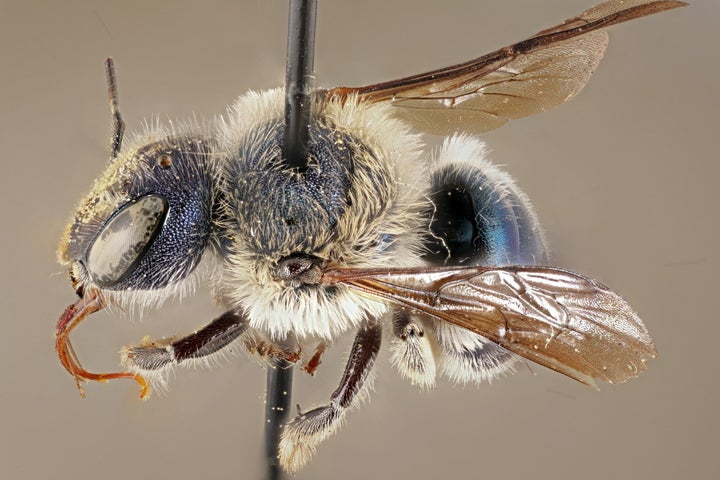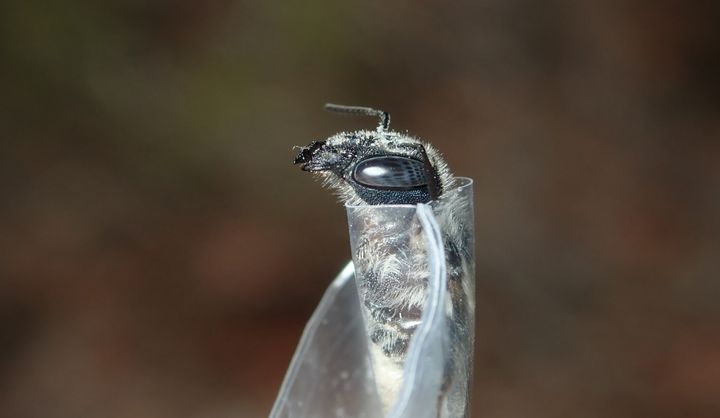An exceptionally rare blue bee that scientists thought might be extinct was rediscovered in Florida in March.
Florida Museum of Natural History postdoctoral researcher Chase Kimmel found the metallic insect ― a blue calamintha bee ― this spring, marking the first time the insect had been observed since 2016, the museum said in a media release.
Kimmel’s discovery is a major step toward the conservation of the little-known species, which is listed by Florida’s State Wildlife Action Plan as a species of greatest conservation need.

“I was open to the possibility that we may not find the bee at all so that first moment when we spotted it in the field was really exciting,” Kimmel said.
“We observed a shiny little blue bee grabbing (an Ashe’s calamint flower) and rubbing its head on the top portion of the flower 2-3 times,” he told USA Today. “We were pretty shocked to see it.”
Kimmel has since found the bee in three of the four locations it had previously been identified and six additional places ― a positive sign for the species.
The blue calamintha is thought to live only in the Lake Wales Ridge region of central Florida. This biodiversity hotspot is one of the country’s fastest-disappearing ecosystems, and is home to a blooming plant known as Ashe’s calamint ― another threatened species, which the bees depend on for food.

The species uses its unusual facial hairs to collect pollen from flowers on these plants, the museum release said. As a solitary bee, it works alone, creating individual nests instead of hives. Researchers have yet to find a nest, but they hope to reveal how these insects do so as part of their research.
Kimmel and his adviser, Jaret Daniels, are part of a two-year research project studying the bees.
This research, funded by a grant administered by the Florida Fish and Wildlife Conservation Commission, could help determine whether the bee qualifies for protection under the Endangered Species Act.
However, the museum said, the Covid-19 pandemic has thrown a wrench into the works. While Kimmel has been living in the region since March, suspension of museum volunteer operations and travel has left the project with limited resources and scaled back the extensive fieldwork.
So until pandemic restrictions are lifted, the museum said, Kimmel is adjusting to working like the blue calamintha bee ― solo.
